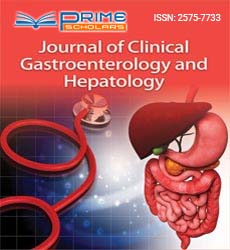Perspective - (2023) Volume 7, Issue 6
The Marvelous World Inside: A Journey Through the Intestine
Yuki Akane*
Department of Biological Science, University of Tokyo, Japan
*Correspondence:
Yuki Akane,
Department of Biological Science, University of Tokyo,
Japan,
Email:
Received: 29-Nov-2023, Manuscript No. IPJCGH-24-18986;
Editor assigned: 01-Dec-2023, Pre QC No. IPJCGH-24-18986 (PQ);
Reviewed: 15-Dec-2023, QC No. IPJCGH-24-18986;
Revised: 20-Dec-2023, Manuscript No. IPJCGH-24-18986 (R);
Published:
27-Dec-2023, DOI: 10.36648/2575-7733.7.6.60
Introduction
The human body is an intricate masterpiece, with each organ
playing a vital role in maintaining overall health. One such
unsung hero is the intestine, a remarkable organ that forms a
crucial part of the digestive system. Comprising the small and
large intestine, this dynamic duo ensures the absorption of
nutrients and the elimination of waste, making it a powerhouse
for maintaining bodily functions. The small intestine is aptly
named for its narrower diameter compared to the large
intestine, yet its significance is monumental. Stretching over 20
feet in length, the small intestine is coiled within the abdominal
cavity, giving it ample space to carry out its intricate tasks.
Description
Divided into three segments the duodenum, jejunum, and ileum
it is in the small intestine that the majority of nutrient absorption
takes place. Digestion begins in the stomach, where food is
broken down into smaller particles. As this partially digested
food, known as chyme, enters the small intestine, it encounters
an array of digestive enzymes and bile produced by the liver
and stored in the gallbladder. These enzymes work together to
break down carbohydrates, proteins, and fats into their simpler
forms, allowing for efficient absorption. The lining of the small
intestine is lined with millions of tiny finger-like projections
called villi, and each villus contains even smaller projections
called microvilli. This elaborate structure vastly increases the
surface area of the intestine, providing an extensive canvas
for nutrient absorption. Nutrients such as amino acids, fatty
acids, glucose, and vitamins are absorbed through the walls
of the small intestine and transported into the bloodstream,
nourishing the body. After the small intestine has extracted
the majority of nutrients, the remaining indigestible material
enters the large intestine. Though shorter in length, the large
intestine is wider and plays a pivotal role in water absorption
and waste elimination. Comprising the cecum, colon, and
rectum, it acts as a reservoir for the formation and storage
of feces. In the large intestine, water is reabsorbed from the
undigested food, transforming the liquid residue into a more
solid form. This process is crucial for maintaining hydration and
preventing excessive fluid loss. Additionally, the large intestine
is home to a diverse community of microorganisms known as
gut microbiota. These bacteria contribute to the final stages
of digestion by breaking down certain substances that escaped
the earlier stages and producing essential vitamins like B and K.
Throughout the journey from the small to the large intestine,
peristalsis, a coordinated muscular contraction, propels the
contents forward.
Conclusion
This rhythmic movement ensures that food particles and
waste are efficiently transported through the digestive tract.
The synchronized contraction and relaxation of muscles in the
intestinal walls facilitate the smooth progression of material,
contributing to the overall digestive process. Maintaining a
healthy intestine is integral to overall well-being. Poor dietary
choices, lack of fiber, and sedentary lifestyles can contribute
to issues such as constipation, irritable bowel syndrome and
inflammatory bowel diseases. Proactive measures, including
a balanced diet rich in fiber, regular exercise, and proper
hydration, can promote optimal intestinal health. The intestine,
with its intricate design and multifaceted functions, is a marvel
of nature.
Citation: Akane Y (2023) The Marvelous World Inside: A Journey through the Intestine. J Clin Gastroenterol Hepatol. 7:60.
Copyright: © 2023 Akane Y. This is an open-access article distributed under the terms of the Creative Commons Attribution
License, which permits unrestricted use, distribution, and reproduction in any medium, provided the original author and source
are credited.

